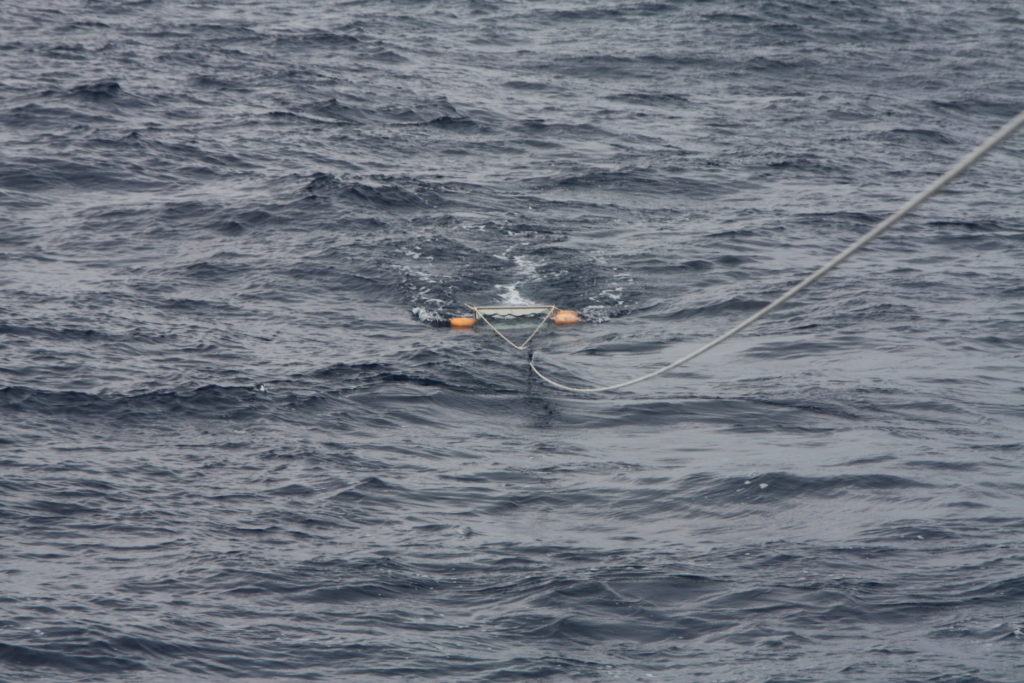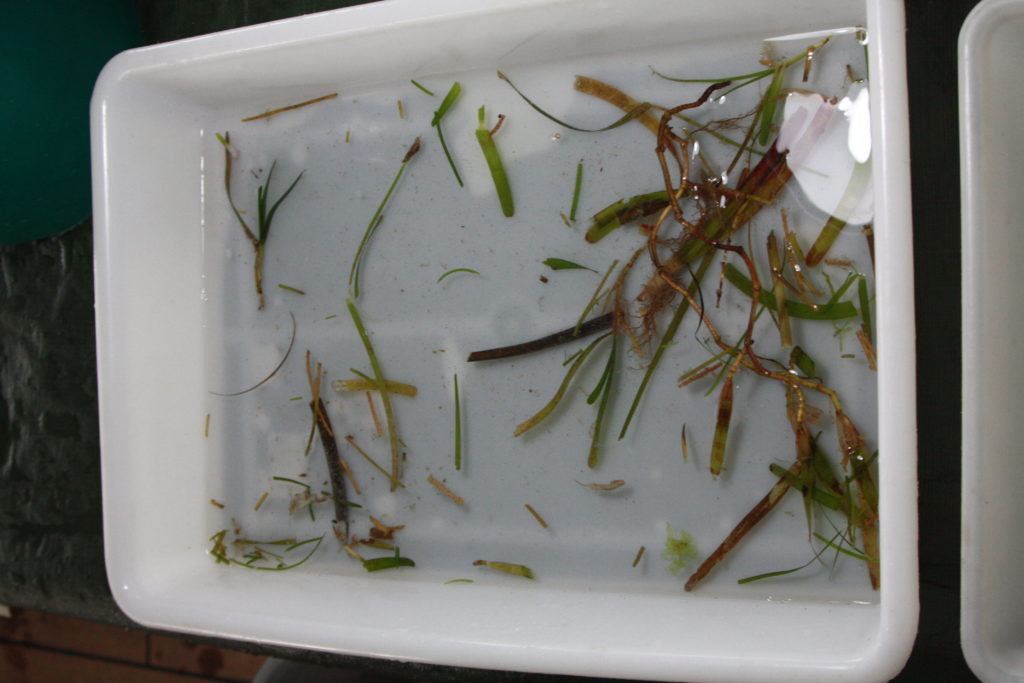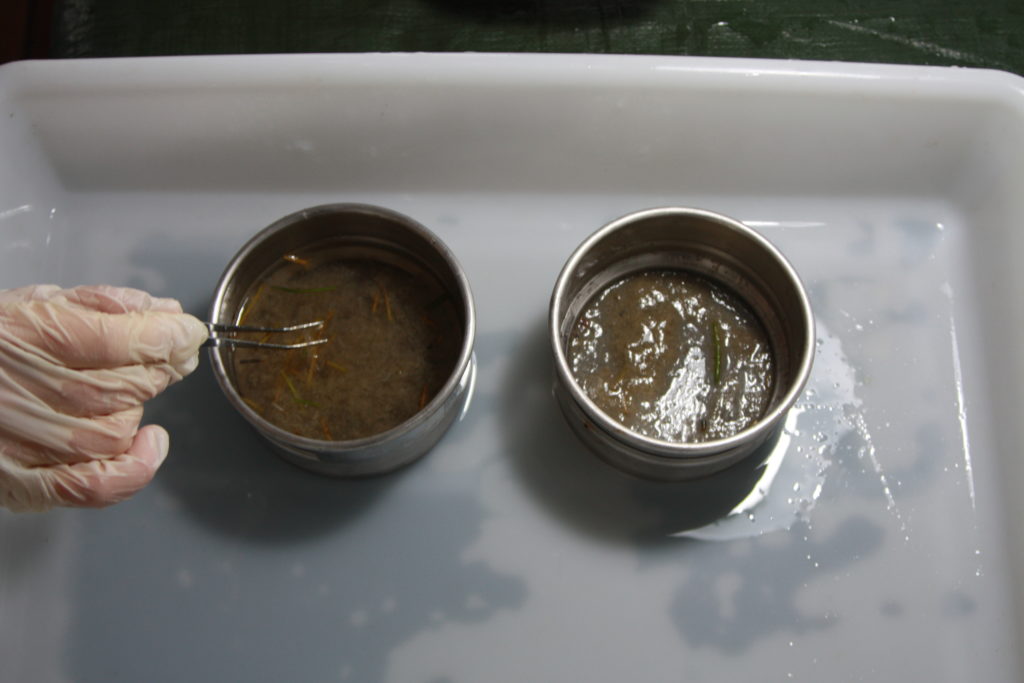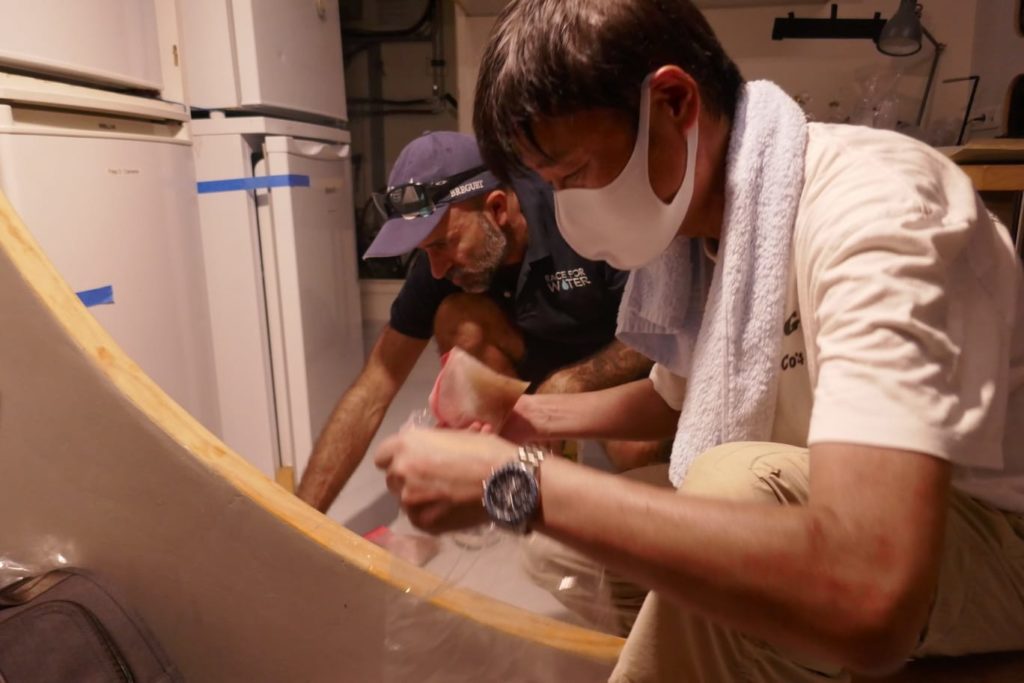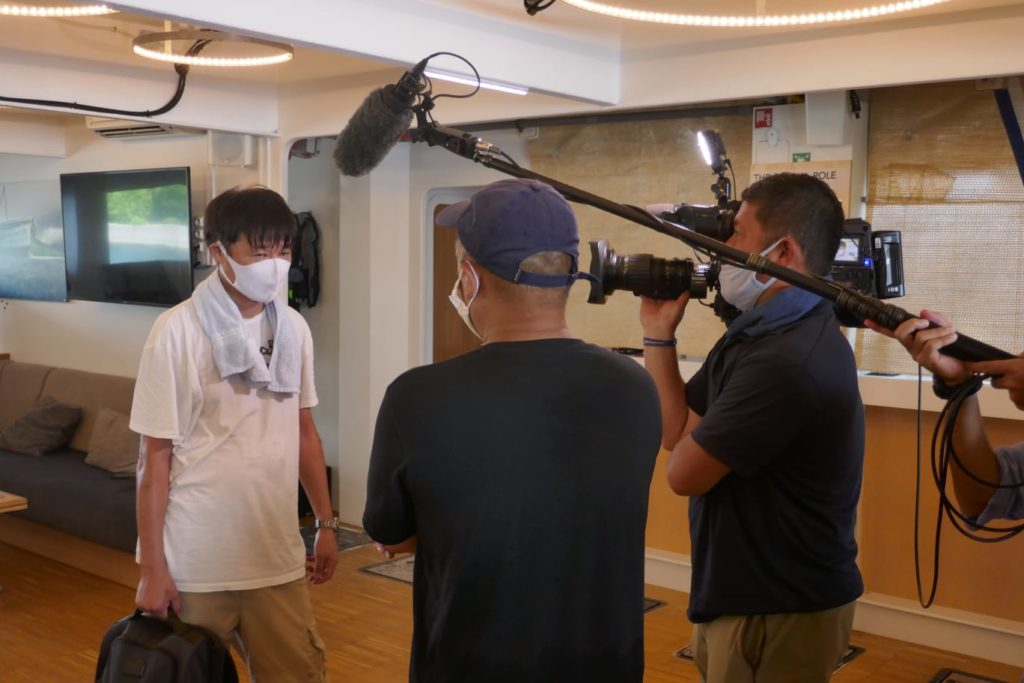Microplastics from Japanese surface waters get sampled
Published on by Kim van Arkel, Scientific Advisor in Science
The advancement of scientific knowledge is one of the three programme pillars that form the basis of Foundation on the odyssey. The Race for Water crew was able to carry out a sampling programme in Japanese waters between Ishigaki and Okinoerabu last spring as part of a collaboration between Japanese Professor Atsuhiko Isobe (Kyushu University), the Zeri Japan Foundation and our local partner Saraya.
The aim was to take samples of microplastics through a fine mesh net, in Japanese surface waters, according to plans set by Prof. Atsuhiko Isobe (Kyushu University) and strictly adhered to by the crew.
The team would regularly deploy the net in 30 minute sessions, at least 20 metres off the stern of the Race for Water vessel, then maintain low cruising speeds below 3 knots. “We then had to record the initial and final GPS coordinates, surface water speed etc… Transfer the material to a collector at the end of the net by rinsing it from the outside with sea water. Finally, we had to remove the collector and pass the contents through a 300-micron sieve over a bucket.
At this stage, it was possible to observe with clean tweezers whether there were any microplastics visible to the naked eye. The elements distributed in a corner of the sieve are then transferred to a jar using a funnel, fresh water and 70% ethanol to preserve the samples. Once our jars are labelled, we put them in the fridge,” describes François Martin, Race for Water’s Captain.
And Annabelle, second captain, concludes: “All along during this trip, we observed floating rubbish, except in the vicinity of Ishigaki Island and when we arrived on Okino-erabu. In this floating debris we noticed, among other things, a lot of floating black buoys from fishing nets. It was frightening… We didn’t see many jellyfish, and little seaweed. Only the first sampling in Ishigaki Bay showed kelp residue. On the other hand, we saw a lot of plankton, phyto and zoo as well as a lot of larvae of small crustaceans and fish in all the samples. The waters look quite rich and, from what I’ve seen already in the Pacific, it often goes hand in hand with the plastic micro-particles. We also saw a few whales. I was sometimes scared by what I saw in the sample: the amount of polystyrene is really frightening… Our samples from the Pacific were a bit smaller (15-20min if my memories are correct) but I still have the impression that the concentration of particles is higher here in Japanese waters.”
Professor Atsuhiko Isobe, was welcomed on board the Race for Water vessel in Fukuoka for the passage in order to recover the 16 collected samples which are currently being analysed in his laboratory: counting, measuring and identification of particles (type, shape, etc.).
We would like to thank to our Japanese partners who have enabled us to carry out this sampling programme; Zeri Japan, Saraya Group and Prof. Atsuhiko Isobe (Kyushu University).
Source: Race for Water
Taxonomy
- plastic pollution
- plastic debris
- microplastics
1 Comment
-
INTERESTING DEVELOPMENT WITH REGARDS TO: Microplastics from Japanese surface waters get sampled
